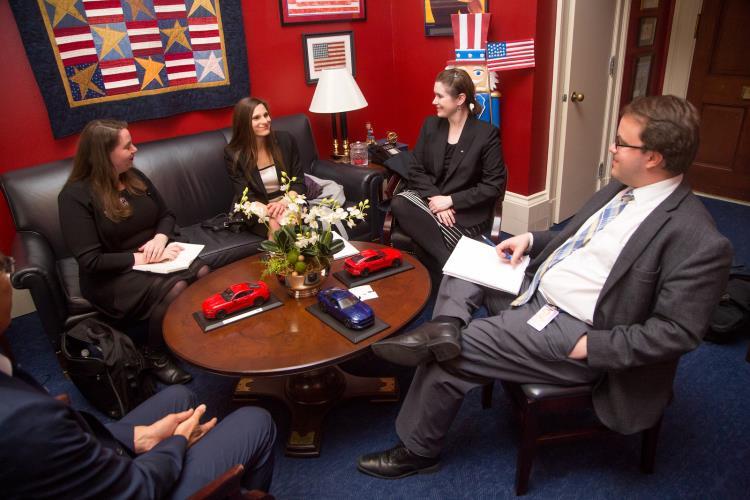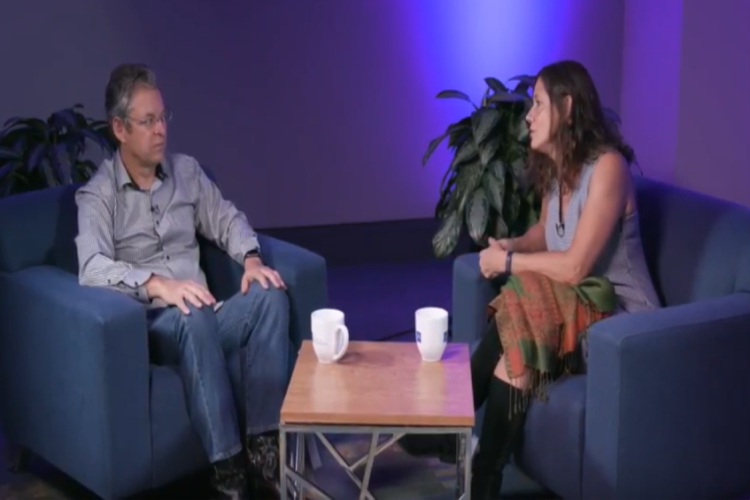
Public Outreach Worldwide Celebrates Brain Awareness
For one week every March, SfN members across the globe engage in outreach with the public around the wonders of the brain — illuminating how it makes us who we are and sharing stories of neuroscience research that is revealing to us the secrets of the brain.
Brain Awareness Week (BAW) was started by The Dana Foundation in 1995 to increase public awareness of the progress and benefits of brain research. BAW allocates time for the world to come together in celebration of the brain, but SfN members can raise awareness about the brain as well as the study of neuroscience throughout the year.
Leveraging resources published by both The Dana Foundation and SfN, students, educators, families, and community leaders can learn and share information about the brain.
Find a Neuroscientist
For example, SfN created an online network called Find a Neuroscientist (FAN) that allows educators, students, and the science-interested public to connect with neuroscientists. School teachers at the preschool through high school levels have contacted SfN members, who have helped to engage students with neuroscience by leading lab tours, teaching lessons with brain models, and directing hands-on activities in local classrooms.
Jacques Noël, a professor of neuroscience at the University of Nice, France, visits local schools with the hope that “teaching science and neuroscience to kids at schools will bring them to university to learn neuroscience, to study neuroscience as students and as researchers.”
Some educators have also invited nonlocal neuroscientists to speak to their class remotely, via video and chat platforms such as Skype, about topics such as the importance of brain safety and sleep. SfN members can sign up to become a FAN member using their SfN credentials.
Attend Conferences
Throughout the year, SfN staff travel to various public and scientific conferences and events to promote brain awareness. Local SfN members are invited to attend these events to help lead hands-on activities and answer attendee questions related to the brain and nervous system.
At public, family-friendly events, activities help attendees to learn about neurons, the spinal cord, the senses, plasticity, and more; at conferences aimed at educators and science instructors, staff demonstrate how to lead neuroscience activities in the classroom and where to find additional lay-friendly classroom resources.
Many other conferences and science fairs are always looking for volunteers to lead activities or to staff a booth. Some of these events are free to exhibit at or have minimal cost. Find out how you can participate in these types of events by reaching out to your local community organizer or groups.
Embrace Your Creativity
Outreach doesn’t have to be in person. Antonio Roque, a professor at the University of São Paulo, in Brazil, conducts much of his outreach online. Roque and his team at the Research, Innovation and Dissemination Center for Neuromathematics (NeuroMat) communicate about neuroscience on their social media platforms, including a blog written in Portuguese.
SfN hosts an annual Brain Awareness Video Contest, which encourages participants to present a neuroscience topic that interests them in a new and creative way. Videos have ranged from rap songs about the brain to stop-motion short films about neurons. This contest is open to the public, and the top videos from every contest are uploaded to BrainFacts.org for the public to enjoy. You can read more about the Brain Awareness Video Contest, including the rules and guidelines, on BrainFacts.org.
Make a Difference
Creating a video for the Brain Awareness Video Contest or talking with the public about neuroscience can be challenging for scientists because outreach requires presenting science-heavy topics in a lay-friendly way.
Christina Williams, a graduate student at Washington State University Vancouver, volunteers with Northwest Neuroscience Outreach Group: Growing in Networks (NW Noggin), which, according to Williams, “is focused on bringing neuroscience to the public level.” Williams advises that to eliminate jargon and make neuroscience relatable, scientists should pretend they are speaking to a relative so they can “explain things to people in a way that's approachable and easy to understand.”
Outreach also requires putting yourself in an environment much different than that of a lab. With the challenges of straying from what is comfortable, however, comes an opportunity to see your science from a new perspective, and to showcase your science to the public.
Raising awareness about the brain and the importance of basic research ensures that the public continues to engage with discoveries that are taking us in new directions to define how we live. Jesus Gabriel Cruz-Garza, a PhD student at the University of Houston, dedicates time to neuroscience outreach because he feels it is “important to bring people closer to the latest developments in science.”
Look for ways to get involved in your community: Use the Chapter Directory to connect to an SfN chapter in your area or organize your own, read about programs and events in your area, and explore educator resources on BrainFacts.org.






















